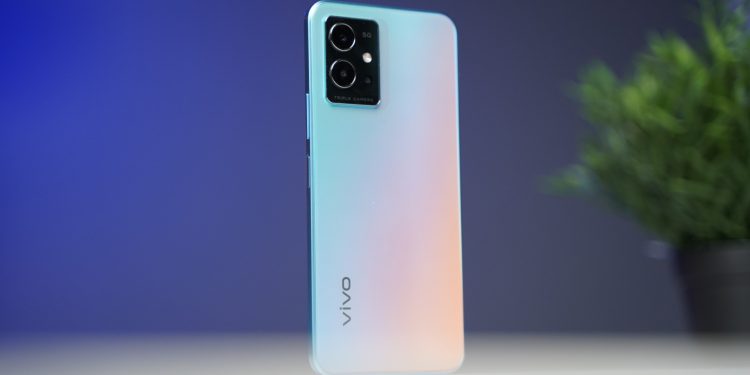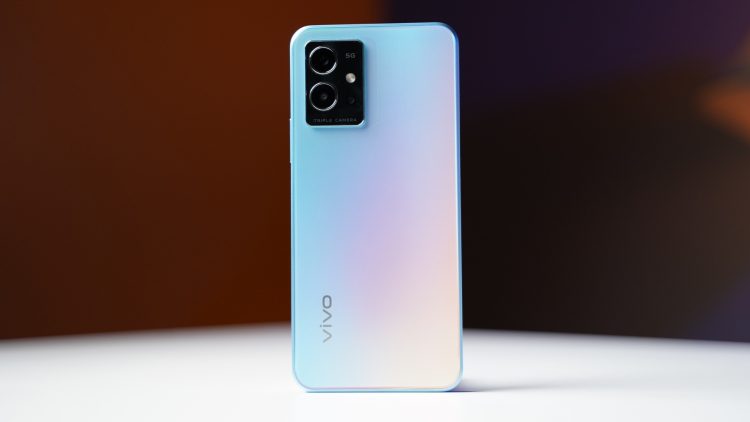
Earlier, Vivo had launched its mid-range performance devices under the Vivo U series. And Z series that targeted only the online-focused audience. Meanwhile, the devices included in that series were capable. But not enough to shift the traction of offline customers to online-only devices. Now, Vivo has announced. Its new series in its mid-range smartphone portfolio i.e. Series-T, which means ‘Turbo’. Both online and offline will be available for the target market and with this. They are ready to rock the floor with the first affordable performance entrant: The Vivo T1 5G.
It is the second smartphone powered by Qualcomm Snapdragon 695 after Moto G71. Now, the question is will the 15,990 INR price tag stand out in this competitive market? After using it as our primary smartphone for two weeks. Here is our review of the Vivo T1 5G. Before proceeding further, let’s take a peek at the specifications of this device:
Vivo T1 5G Full Specifications
| Brand | Vivo |
| Model | T1 5G |
| Release date | 2022, February 14 |
| Launched in India | Yes |
| Form factor | Touchscreen |
| Dimensions (mm) | 164 x 75.8 x 8.3 mm |
| Weight (g) | 187 g |
| Battery capacity (mAh) | 5000 mAh |
| Removable battery | No |
| Fast charging | Proprietary |
| Refresh Rate | 120 Hz |
| Screen size (inches) | 6.58 |
| Touchscreen | Yes |
| Resolution | 11080 x 2408 pixels |
| Protection type | Gorilla Glass |
| Aspect ratio | 20:9 |
| Processor | octa-core |
| Processor make | Qualcomm Snapdragon 695 5G |
| RAM | 8GB |
| Internal storage | 128GB |
| Rear camera | 50 MP, f/1.8, 26mm (wide), PDAF, 2 MP, f/2.4, (macro),2 MP, f/2.4, (depth) |
| No. of Rear Cameras | 3 |
| Rear autofocus | Yes |
| Rear flash | Yes |
| Front camera | 16 MP, f/2.0, (wide) |
| No. of Front Cameras | 1 |
| Operating system | Android 11 |
| Skin | FuntouchOS 12 |
| Wi-Fi | Yes |
| Wi-Fi standards supported | 802.11 a/b/g/n/ac/ax |
| GPS | Yes |
| Bluetooth | Yes, v 5.20 |
| NFC | Yes |
| USB Type-C | Yes |
| Number of SIMs | 2 |
| SIM 1 | |
| SIM Type | Nano-SIM |
| GSM/CDMA | GSM |
| 3G | Yes |
| 4G/ LTE | Yes |
| 5G | Yes |
| Supports 4G in India (Band 40) | Yes |
| SIM 2 | |
| SIM Type | Nano-SIM |
| GSM/CDMA | GSM |
| 3G | Yes |
| 4G/ LTE | Yes |
| 5G | Yes |
| Supports 4G in India (Band 40) | Yes |
| Face unlock | Yes |
| In-Display Fingerprint Sensor | Yes |
| Compass/ Magnetometer | Yes |
| Proximity sensor | Yes |
| Accelerometer | Yes |
| Ambient light sensor | Yes |
| Gyroscope | Yes |
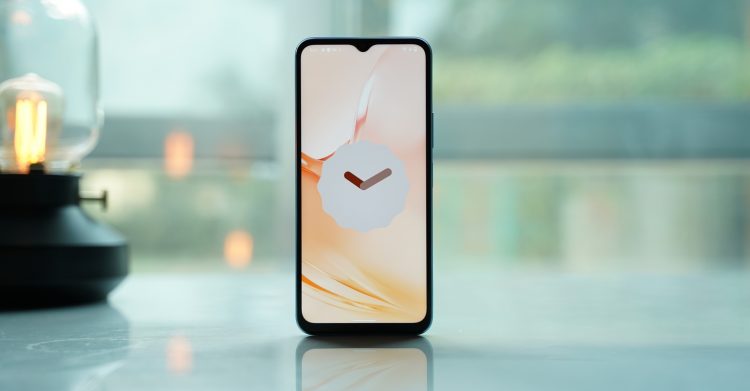
DESIGN & DISPLAY
Vivo is well known for creating adorable and stylish cues in a device and the Vivo T1 hasn’t lost its design ethos. It looks very like the Vivo Y75 which was recently announced for the Indian market. To start with the design. The plastic back has a gradient combination of blue and pink that shimmers when the sunlight hits it. This matte back doesn’t attract smudges comfortably which screams. Its design to grab more eyeballs and the rainbow fantasy color. That we’re using to conduct this review, no doubt looks beautiful.
There is another colorway, namely. Starlite Black with a matte black back like a glittering star texture. Due to its matte back design, it adds an advantage for better gripping of the device. The rear camera bump trace crosses out from the camera bump border. Which I felt was a bit odd as it is there for the sake of aesthetics. It often seems that Vivo has left the Vivo Y75 behind with a slightly smaller camera bump. This design cue is subjective, but it triggers our OCD. But, the flat edges are also made of plastic but feel durable.
CAMERA
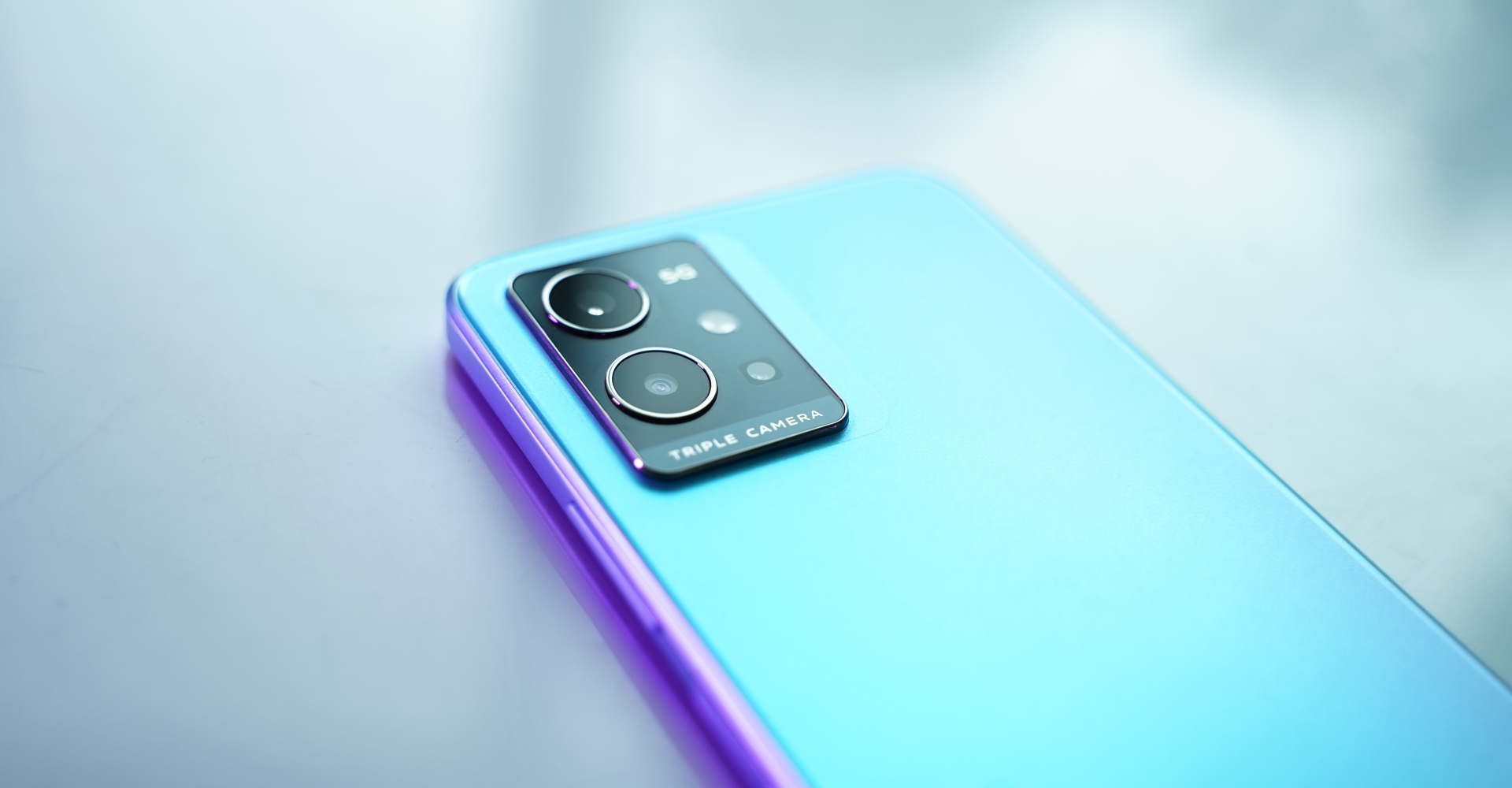
With a slim profile of 8.25mm and a weight of 187g, Vivo touts it as ‘India’s thinnest 5G smartphone 20K’. It feels light and thin during hand operation. Providing a physical overview, it houses a power button. That doubles as a physical fingerprint scanner. And a volume rocker on the right while the left side is empty. At the bottom, there is a housing for a USB Type-C port, a secondary microphone, a headphone jack and a mono speaker. At the top, there is a SIM tray slot and a microphone-equipped Another bonus. Is that it supports expandable memory card expansion up to 1 TB.
The Vivo T1 shares a 6.58-inch FHD+ IPS LCD display with a refresh rate of up to 120hz and a touch sampling rate of up to 360hz. You may feel disappointed as brands have spoiled others by offering AMOLED. Display panels in this price bracket But. It also sports an option to toggle between 60Hz, 90Hz and 120Hz to conserve battery juice. This display reproduces vivid and clear colors but there is a small catch. This LCD display puts out 460 nits of peak brightness. which can be problematic when used in direct sunlight.
Moreover, the choice to add a dew drop notch makes it look a little old while this part is bombarded. With a punch hole camera layout that also consumes less space on the display. It onboards 3 color profiles;- Standard, Professional and Bright. But, we’d recommend switching it to a ‘brighter’ color profile. And adjusting the color temperature towards a slightly cooler side. Another caveat I found here is that it supports Widevine L1 certification. But lacks HDR playback when using Netflix.
performance
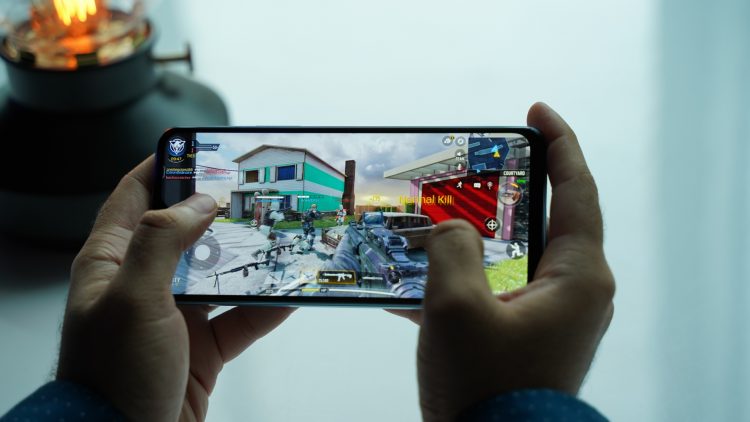
The Vivo T1 5G is powered by the Qualcomm Snapdragon 695 chipset. That supports 5G connectivity and is an incremental update. Over the Qualcomm Snapdragon 765G. This processor is based on 6nm which offers a clock speed of up to 2.2Ghz. Due to a slightly weaker GPU. It is difficult to push greatest graphical output while playing games. For example, it’s not the most powerful SoC out there. But it might be enough for your daily work and a handful of gameplay. While playing BGMI, in HD graphics with high frame rate and in Call of Duty Mobile. The graphics reached very high with very high frame rate.
If it’s pure performance, the iQoo Z3(Review) packs a Qualcomm Snapdragon 768 along. With a much more powerful Adreno 620 GPU which gives it an upper hand in graphic-intensive games. But you’ll need to stretch your budget for that. Up to Rs 20,000 if benchmark score is more important to you. It scored 409416 in Antutu benchmark, 679 single-core score in GeekBench 5. And 1907 in multi-core score. During the CPU throttling test, the Vivo T1 5G throttled to 81% at its peak performance. It is available in three storage configurations:- 4GB RAM + 128GB ROM, 6GB RAM + 128GB and 8GB RAM + 128GB. It supports 2 5G bands which is a hurdle considering the competition on the table.
While the rest of the camera in this segment pushes in the right direction. The Vivo T1 5G offers a powerful 50MP primary Samsung JN1 sensor. And a weaker 2MP depth sensor and 2MP macro sensor.
But, the lack of an ultrawide sensor really robs. This device of a chance to stand out against its competitors.
The images captured from the primary sensor are slightly Saturated. from the natural look of the scene. Which looks pleasing to the eye. In outdoor situations, the device handles the dynamic range quite. Well, with enough detail for the price bar. Photo processing maintains properly lit shadows. Moving towards low light conditions, the noise level increases. And the softening is quite evident in the images. Edge detection works flawlessly in portrait mode and object separation is on-point.
On its front optics, this 16MP selfie camera takes sharp photos. With adequate levels of detail. And color tones are less saturated than natural in well-lit conditions. As far as video capabilities are concerned. It can shoot up to 1080p resolution at 60fps and sadly it lacks support for 4k resolution. Another drawback is that there is no EIS (Electronic Image Stabilization). Onboard which leads to shaky video footage.
Software and battery
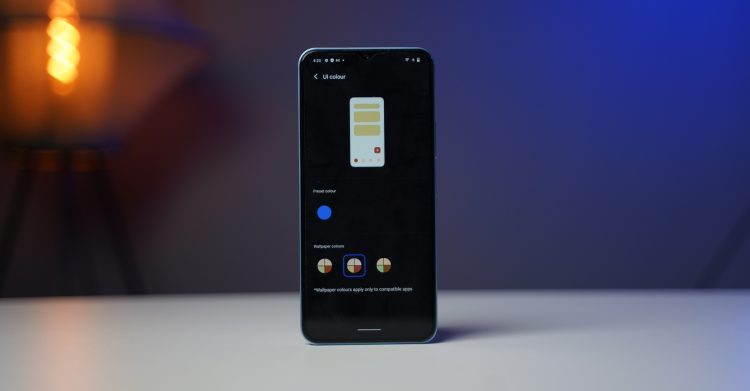
Vivo T1 runs on FunTouch OS 12 which runs on top of Android 12 and is well optimized and feature rich. During our usage with this device, we didn’t encounter any major bugs or issues. Other than micro stutters while navigating the UI. To keep the price competitive, Vivo has bombarded it with some bloatware like Creed, Josh. Moz, MX Takatak, ShareChat which can be uninstalled easily. These bloatware apps caused spam notifications. But this was resolved by removing unnecessary apps.
It packs a 5000mAh battery which is top notch for this price level and ranks above the Vivo T1. This battery backup can easily last a day on a full charge with moderate usage. Which includes browsing social media, making phone calls and listening to music. Which lasts up to 7 hours on average which is decent. This device is no different when it comes to fast charging which is only latched at 18W. Meanwhile, other competitors offer 33W fast charging which drags. It down a bit in this category. Juicing this battery, it takes about 1 hour 45 minutes to fuel from 0%-100%.
impartial judgement
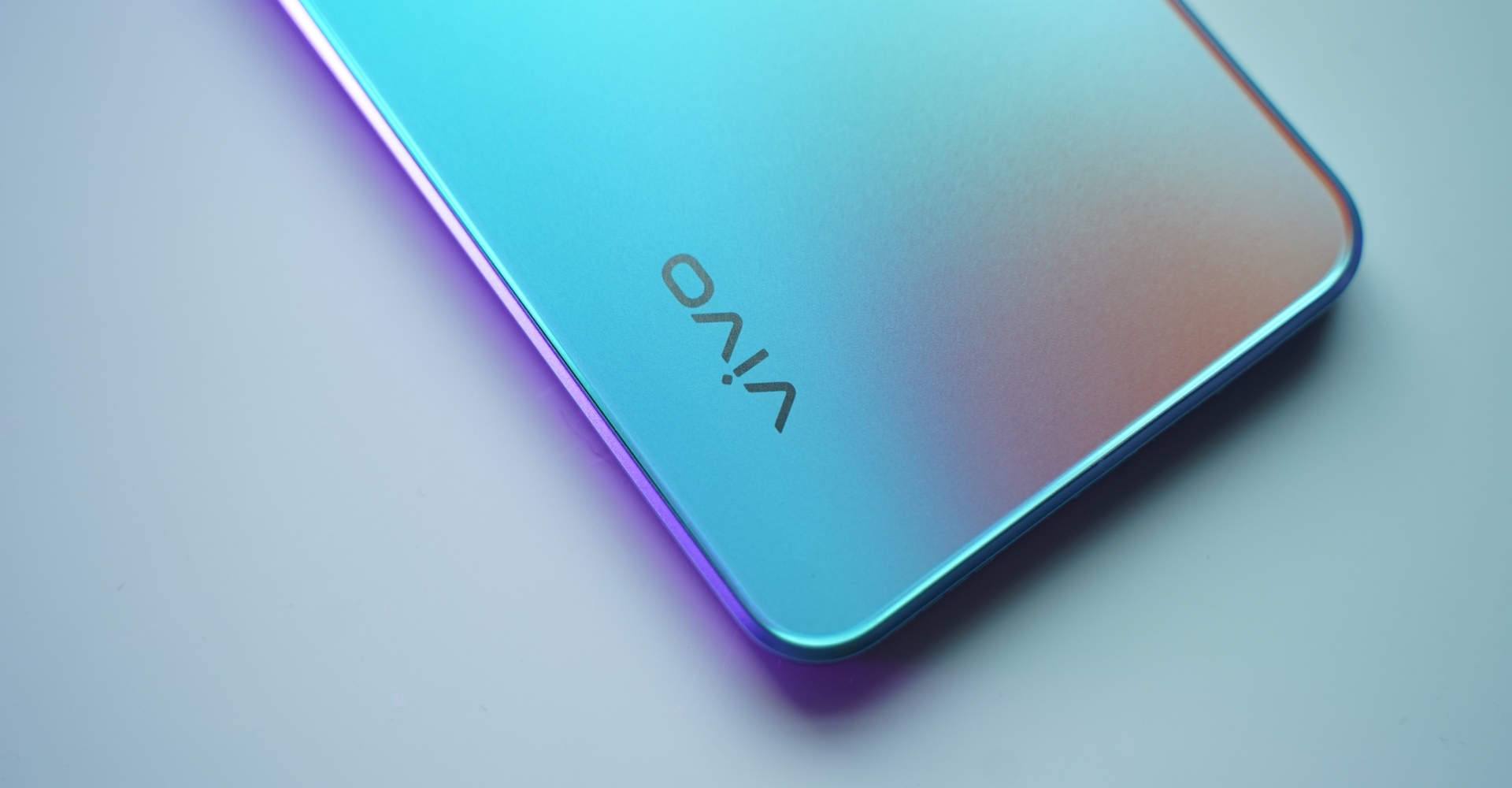
Vivo T1 5G is available in two colors:- Rainbow Fantasy and Starlight Black priced at Rs 15,990 for 4GB RAM + 128GB ROM. Rs 16,990 for 6GB RAM + 128GB ROM and Rs 19,990 for 8GB RAM + 128GB ROM.
The Vivo T1 focuses on everyday experience rather. Than raw performance and offers an excellent camera experience. And this new squared-off design sets it apart from its ultra-bright competitors. The Qualcomm Snapdragon 695 is a capable processor that delivers reliable performance. And can handle multitasking and gaming clocking in at 40fps thanks to. The slightly weaker GPU. But, that doesn’t take away from the gaming capabilities it offers at such a price point. The display supports 120Hz refresh rate in the world of LCD. There are also some flaws you need to watch out for like a 2019 dewdrop notch. Lack of an ultrawide camera, charging speed limited to 18W and limited to a few 5G bands.
But, if you are someone who is okay with these errors; This device is an excellent option to buy as your daily driver.
Looking at some of the other options, the recently launched. Realme 9i has some great features like a large display. An attractive design, stereo speakers, fast charging and a large battery. But the rear camera experience falls short, which is still sluggish. Even with 5G capabilities. After discharge; The processor is still power efficient. And it performs like a 2021 budget smartphone and lacks an ultrawide lens. The Moto G71 is a notable option that offers an AMOLED display with 33W fast charging. And a stock Android experience. Also on the list is the Redmi Note 11 which boasts a great AMOLED display. With a strong battery life and a refresh rate of 90hz. If MIUI is your taste and you don’t care about future proofing. Your smartphone with 5G connectivity. Then this is a worthy option to consider as per your needs.

